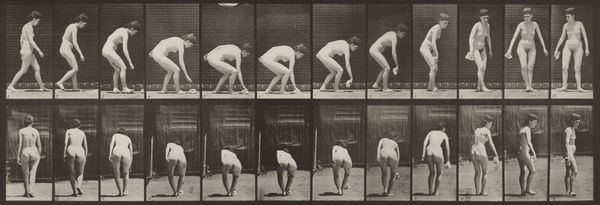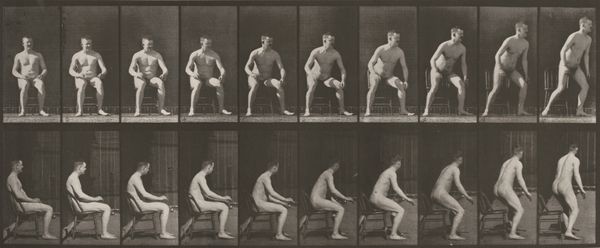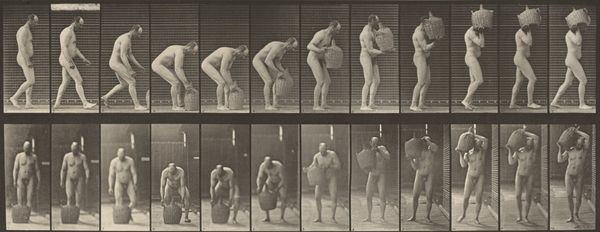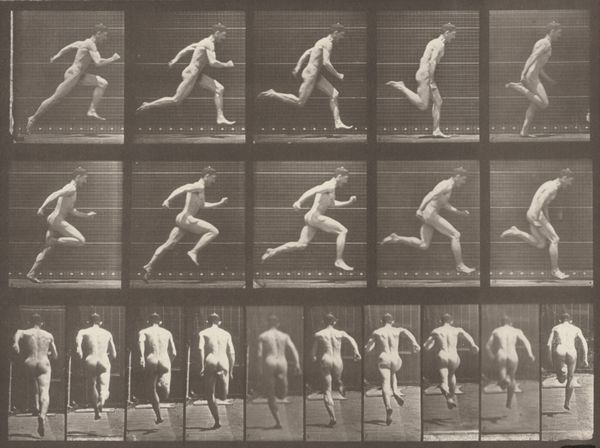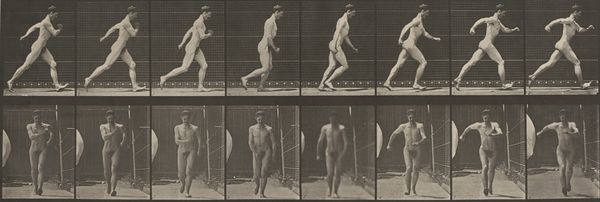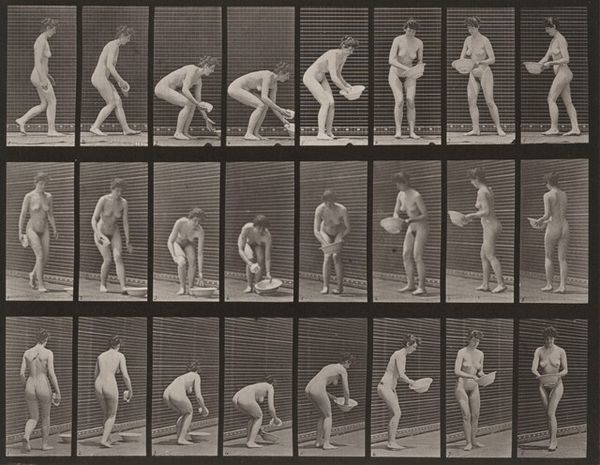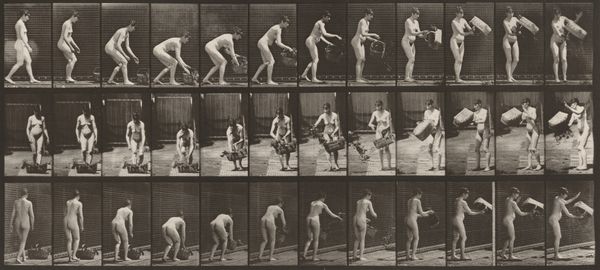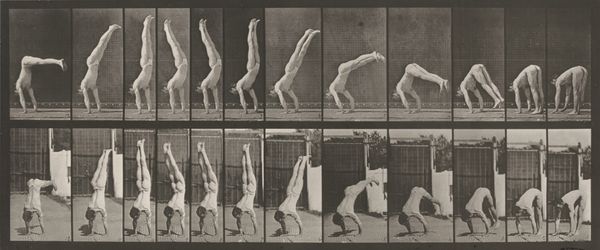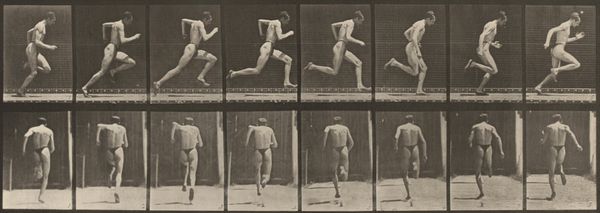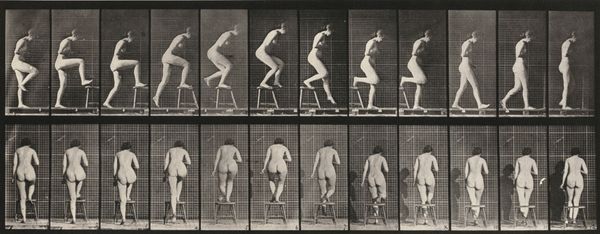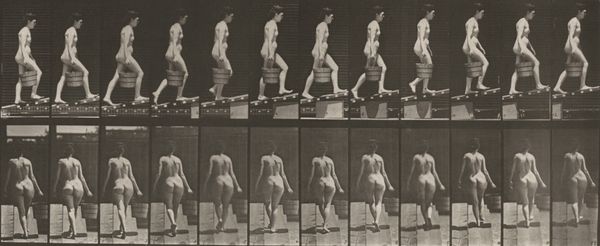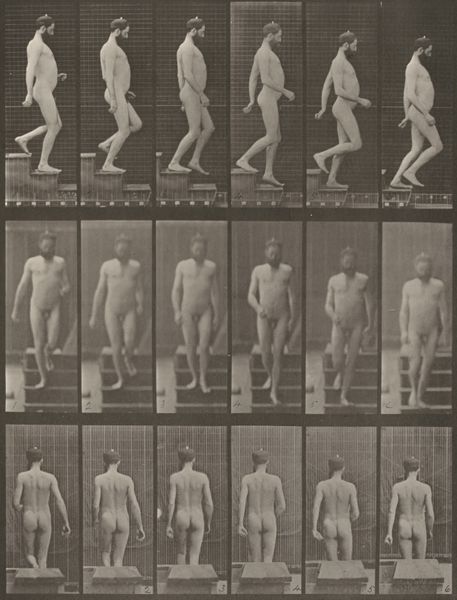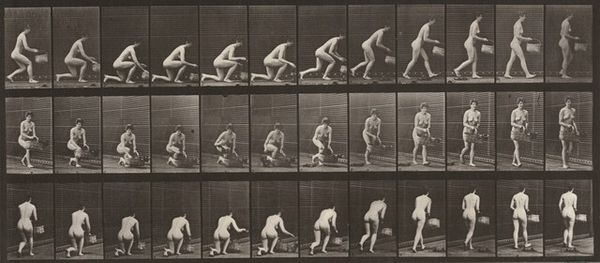
print, etching, photography, albumen-print
#
action-painting
# print
#
etching
#
figuration
#
photography
#
orientalism
#
academic-art
#
nude
#
albumen-print
#
realism
Dimensions: image: 16.1 × 45.1 cm (6 5/16 × 17 3/4 in.) sheet: 48.2 × 60.9 cm (19 × 24 in.)
Copyright: National Gallery of Art: CC0 1.0
Curator: Let's turn our attention to Eadweard Muybridge's "Plate Number 183. Walking on hands and feet" from 1887, an albumen print showing a figure in motion. It’s one plate from his series "Animal Locomotion". Editor: My first impression is how this study evokes the feeling of scientific detachment—yet, at the same time, the repeating grid almost amplifies the vulnerability of the nude figure. It feels both clinical and human. Curator: Precisely. Muybridge, obsessed with capturing movement, pioneered a photographic technique, using multiple cameras triggered in sequence. Notice how he freezes increments of the human form bending, as though exploring the arc and geometry of corporeal shape. Editor: And we cannot separate this objective approach from its historical context. Remember, Muybridge sought to dissect and display motion, very often through images of marginalized bodies, extending traditions of objectification already present in the culture. Were these photographic series made to advance scientific study or something much darker? Curator: One could argue that the neutral backdrop and the grid provide objective markers for measurement, thus emphasizing his focus was not the individual but the locomotion itself. Consider the lines, the curves—it's an anatomy lesson captured mechanically, abstracting the individual almost into a set of kinetic coordinates. Editor: Perhaps, but even with this framework of 'objective science' the image reflects Victorian attitudes about the body. The very act of dissecting movement in this way speaks to attempts to catalogue and categorize humanity. I look at this and see a body laid bare to scrutiny by both science and society. Curator: I can appreciate that view. Regardless, the influence on later art movements like Futurism is undeniable; the dissection of movement, showing simultaneity. One may also suggest it reflects a philosophical approach related to Bergson’s “duration.” Editor: And further informs critical dialogues around representation and the power dynamics inherent in seeing and being seen. Curator: Well, that definitely shifts one’s attention to consider broader ethical ramifications. Editor: Art has an uncanny way of doing that!
Comments
No comments
Be the first to comment and join the conversation on the ultimate creative platform.
